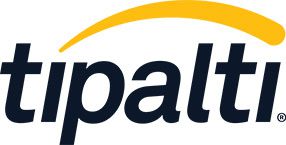
Evolution is necessary, and probably inevitable
Arguably any evolution of the CFO/FD role will only work when accompanied by the introduction of ever-deepening automation of finance functions (with the caveat that not all require instant automation – it must be gradual to succeed and carry their financial staff support with it).
Progress occurs when ‘finance’ moves:
- from silos to increased integration across the internal value chain; finance automation must focus on those processes which most reduce or even eliminate existing separations of silos across the gamut of finance activities
- from the manual to the information-led; repetitive tasks are what need automation – with processes optimised and the risk of errors minimised – so that the need for human interventions only occurs for exceptions
- from a cost centre approach to a value-centric approach; through automation, financial management can become a performance driver with improved internal controls rather than the traditional monies gatekeeper/cash manager
- from the delayed to near real-time; new technologies make it possible to bring together financial processes to the point where finance can deliver results, and analyses, in near real-time to executives (including CFOs/FDs) via the likes of dashboards; the wait for monthly or quarterly results can become history.
By eliminating silos and automating tedious tasks currently performed by expensive human resources, CFOs/FDs can reshape both the finance function and their financial personnel skills for the future. Refocusing tasks means staff in financial departments can concentrate on satisfying stakeholders (internal and external). That is a major step forward.
Automation helps the finance function: so what to do
To understand what is possible, consider what to do with (say) Accounts Payable (AP). (see also Tipalti White paper) Simple automation steps can include:
- introduce onboarding performed by suppliers; if the latter can access a self-service portal to enter their accurate information (after all, suppliers have an incentive to input correct details – so they receive prompt payment), then errors will diminish
- OCR; though not an end in itself (because its results will need some degree of manual verification), OCR can substantially reduce tedious manual keying and data entry (and the risk of accompanying errors)
- AI/RPA technology; this can perform faster, less human-involved invoice and purchase order matching, which should leave a smaller residue of exceptions as well as speed up approvals for payment
- payment automation; by electronically submitting batches of payments, including cross-border ones, to the correct financial institutions (and exploiting the supplier-entered destination bank accounts), the result is faster, more accurate payment (accompanied by less exposure to fraud) for less manual involvement
- improving AP team morale; by reducing the time spent answering purchasing supplier queries, performing reconciliations, and other control and compliance aspects.
To go one step further, CFOs/FDs have a duty to mitigate fraud risk. Automation, especially automating payments, reduces that risk. Procurement and payment are two sides of the same coin. AP is the connecting function.
Take, for example, an under-rated side-effect of manual processes. They can unintentionally enable fraud opportunities. For instance, fraudulent supplier invoices submitted to AP with edited sort codes and account numbers create problems. Manually processed payment of such invoices can all too easily slip through. Deploying automation which validates payee details ensures incorrect payments do not occur.
This is not all…
While automating AP may be one target financial function, other functions (in alphabetical order) open, to varying degrees, new opportunities to automate, including:
- Accounts Receivable
- Budgeting and Forecasting
- Accounting period close management
- Corporate taxation (including VAT)
- Travel and expense management
- Global payments, treasury and cash flow management
- Disclosure and compliance reporting.
To summarise
Seamlessly integrating automation provides real operational benefits. Improved accuracy, not least via reducing manual data entry, is one part. Focusing on workflow and process automation is another.
The benefits which then flow from automation are multiple:
- improved staff satisfaction (and retention)
- superior enterprise controls (whether to prevent fraud or limit access to sensitive financial information or ensure legal and regulatory compliance)
- the introduction of a systematic approach which enables partners (customers, suppliers and others) to perform their own self-service, thus reducing internal finance department workloads
- a reduction in, or even removal of, inter-silo frictions
- an evolution to value-centric finance functions (rather than cost-centric ones)
- adoption of a strategic, for the business, finance environment.
Conversely, failing to introduce finance automation leaves CFOs/FDs exposed, held back by traditional means and methods.
Trying simultaneously to be relevant to the business’ strategic challenges when only equipped with traditional systems and manual processes is a tough nut to crack. Put another way, the future of the finance function is not about the technology, though this is significant. Success will come with the redefining of the way the finance function operates in support of its business.

Tipalti enables high-growth companies to scale quickly by making payables strategic with operational, compliance, and financial controls. Companies can efficiently and securely pay thousands of partners and vendors in 196 countries within minutes. Thousands of companies, such as Amazon Twitch, National Geographic, Business Insider, Hopin, Cazoo and Time Out use Tipalti to reduce operational workload by 80 percent and accelerate the financial close by 25 percent, while strengthening financial controls and spend visibility.
























